UNDER THE SKIN: FORD FIESTA R5

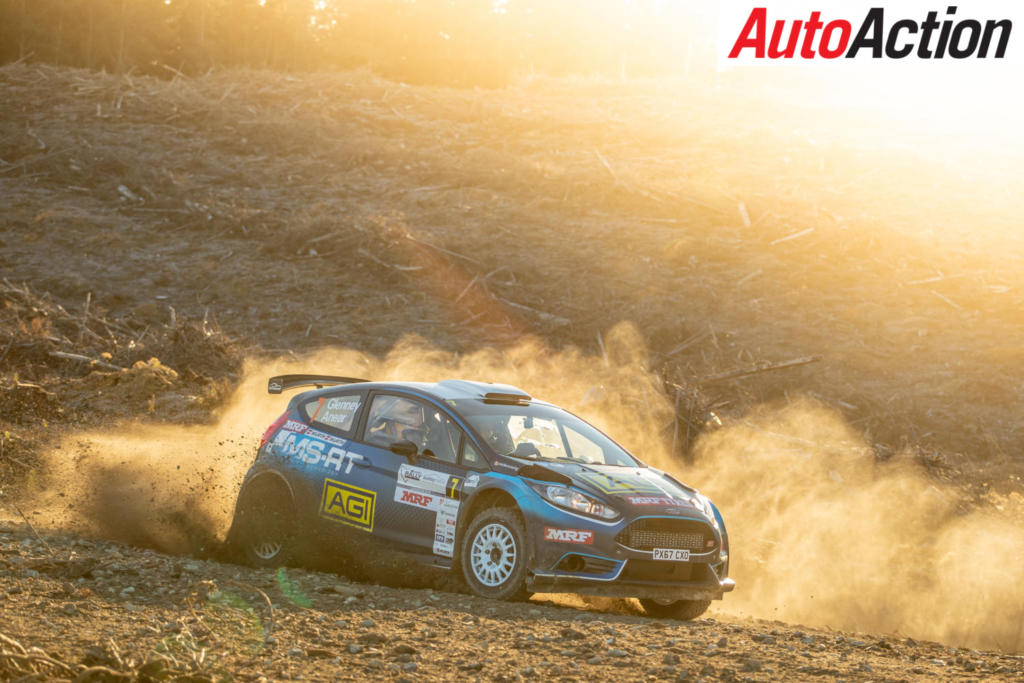
Under The Skin: Ford Fiesta R5
It is an exciting time for the Australian Rally Championship, a combination of new cars and rapid drivers is growing the interest of a title that has had a bumpy recent history.
By HEATH McALPINE
The introduction of R5 machinery has certainly raised the stakes in the outright ARC title.
Eli Evans took his fourth title in a Skoda Fabia R5 last year, leading to a commitment from multiple teams to join the R5 ranks this season.
Western Australian John O’Dowd has since taken over the Fabia used so successfully by Evans last year and prepared by RaceTorque.
Two more models have appeared since, a Hyundai i20 R5 for the Tasmanian-based brothers Scott and Marcus Walkem, and the M-Sport Ford Fiesta R5 driven by Luke Anear, with experienced rally driver Steve Glenney playing mentor and co-driver.
Anear has only recently turned to the dirt, initially racing the world’s favourite rally car, the Subaru Impreza WRX STI before committing to an upgrade.
“It was agreed that I would be safer and learn faster if I had an R5 car – if the budget allowed,” said Luke Anear of his choice.
“I was rallying a Group N Subaru and the plan was to continue in that, but then we saw the availability of the R5 cars. I had interacted with M-Sport previously and the customer service was exceptional, so I thought I’d make the investment and continue the support.”
The first roll out of R-series regulations was initiated in 2008 (R5 appeared in 2012) in what was a major shake-up for rallying within the World Rally Championship and Europe. The R-series categories range from top tier WRC to the smallest R1B category.

R5 is the second tier from the top and is the set of regulations used in WRC2, whilst also being readily applied to domestic series including Britain, France, Africa and here in Australia.
A variety of different manufacturers support R5 including Citroen, Peugeot, Volkswagen, Proton and the aforementioned trio of manufacturers currently competing in the ARC. A cost cap of 190,000 euros applies to R5, as the FIA stringently controls the homologation of each car and is much like circuit racing’s TCR category when it comes to the regulating of parts
So far, the interest in R5 cars is growing since RaceTorque imported the first of its Fabias a couple of seasons ago and with competitors viewing the team’s results, the interest in fielding an R5 has grown considerably.
“The Skodas have proven to be a very reliable and a great car, which has given others the confidence to look at other R5 options,” Anear explained. “I think it’s logical that if you see a couple here it gives people the confidence to go do the same and has a flow on effect to build support across the sport.”
Anear’s experience of R5 is only two rallies old, but the difference between his new rig and the previous Subaru is night and day.
“It’s a whole new world,” exclaimed Anear. “It’s completely different. The development that has gone into the Fiesta is incredible compared to a road car that has been modified for rally; these are purpose-built race cars from the ground up.”
Anear and Glenney debuted the car at last month’s Rally Tasmania where it performed faultlessly, although Anear accidentally tested the Fiesta’s durability.
“Everything is just very strong, it’s a tough car,” Anear explained.
“In Tasmania, we lost it going into a seven left and went up a bank. I thought there must have been a wheel torn off it but the car was absolutely fine. Not even the wheel alignment was out.
“It’s an incredibly strong car and it’s built to be driven tough in the most extreme conditions in the world, these cars are being driven to the limit. The Australian conditions are fairly tame compared to some of the WRC events and the cars are made for it. The harder you drive it the better it performs. It’s a fantastic piece of machinery, it’s so enjoyable to drive and every time I get in it, I feel more and more confident.”
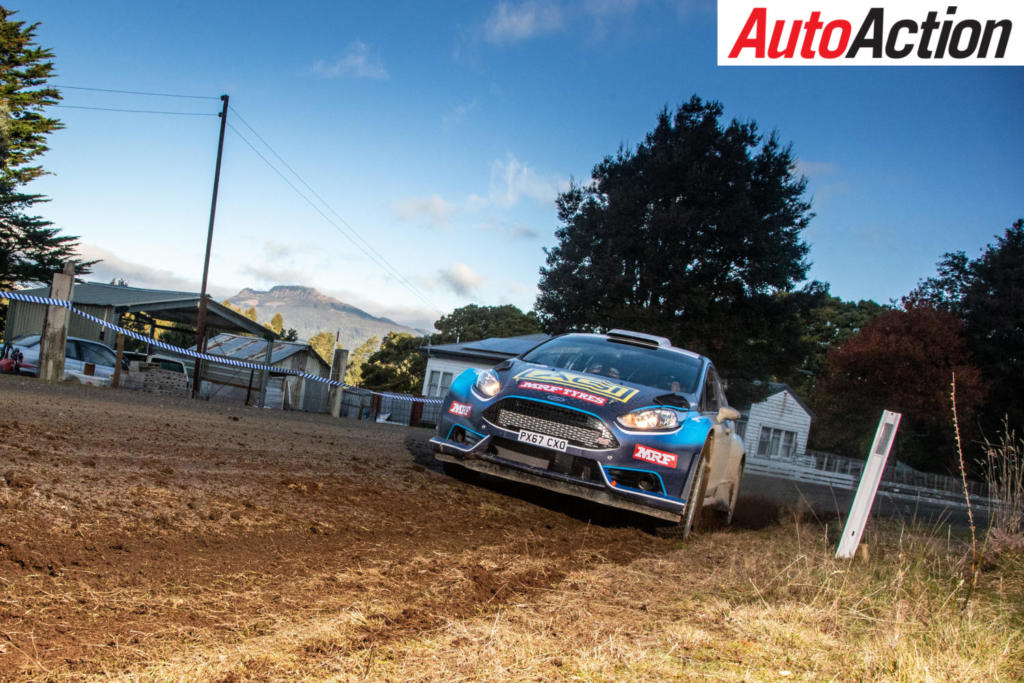
Experienced rally mechanic Peter Nunn looks after the preparation of the Fiesta at his Launceston workshop. He describes the car as efficient and told Auto Action it is a dream to work on.
“It’s just a really well-built car, well sorted, these cars came out in 2013 so it’s had more than five years development and it’s quite an easy car to work on, very simple,” Nunn complemented. “M-Sport make the cars user friendly because if there are problems you need to be able fix things in a 20-30-minute service.
“It comes with a maintenance schedule, everything’s documented procedures and how to do things. It’s made easy for us. There’s a part list, every single part that’s on the car has a number, so it makes it easy to send an email to M-Sport asking for a particular part.
“It’s simple and efficient to run.”
These qualities can be attributed to the powerplant the Fiesta runs. For this particular model it is a 1.6-litre 4-cylinder turbocharged engine with a pop off valve, while a 32mm restrictor is a common part for all R5 models. Under the homologation process even the tune is included, while the internals such as the radiator and intercooler are fabricated at M-Sport’s Cockermouth factory alongside the team’s WRC program.
A small muffler has been installed, but it is still a loud car with the crew having to wear headsets even during transport stages.
Nunn admitted that due to the Fiesta being so new, he is still understanding how the car works as it is a big leap from the Group N models he has worked on previously. That’s not to say the car doesn’t come with substantial support. Nunn was aided by an M-Sport engineer in Tasmania and has a lot of reading to do as the car comes with an extensive parts and maintenance booklet.
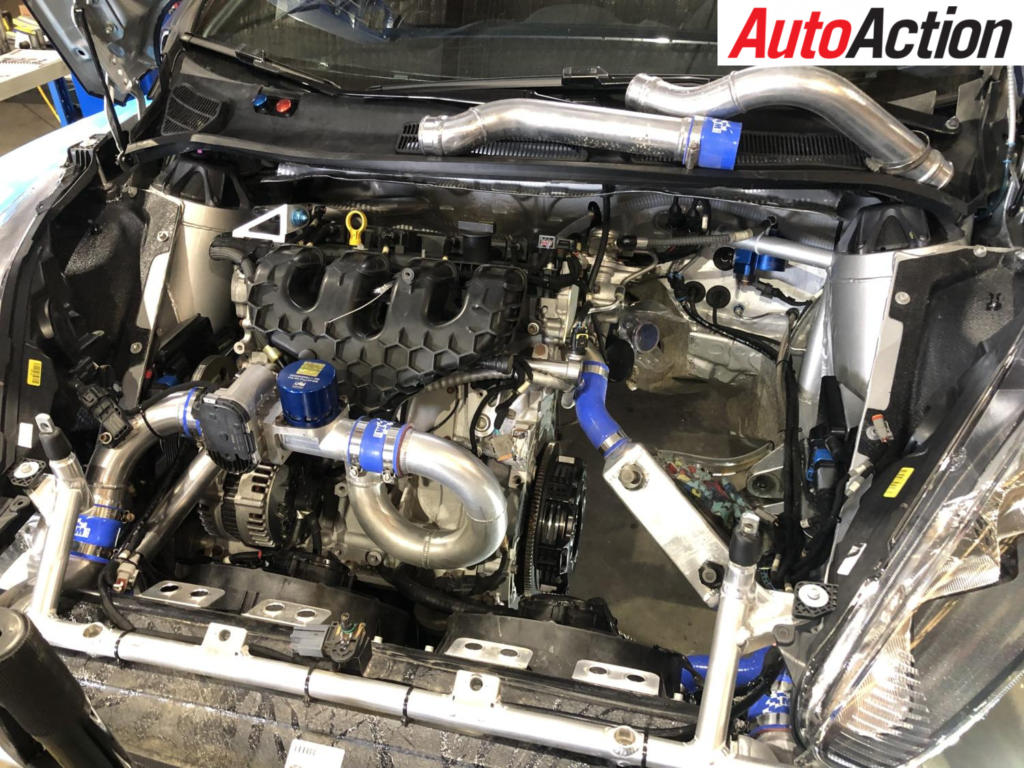
This should help if Nunn has to undertake an engine rebuild (hopefully not for a while), this being an advantage in choosing the Fiesta as the powerplant is not sealed allowing the choice of M-Sport rebuilding it or Nunn doing it himself.
“We’re allowed to rebuild this one if we want to,” said Nunn. “There’s an option for M-Sport to rebuild, but we can purchase the parts ourselves. With Skoda you can’t.
“The down side of these cars is because it’s homologated, you have to use that part, you can’t just make up arms for it or change anything. The car has to be complete and comes with a homologation book that is 260-pages. It has everything in there, documented, pictures and all.”
Nunn is just starting to explore the electronics. Being a previous user of MoTeC, the UK-based Life Racing ECU is totally different to what he has dealt with before. One of the innovations he has discovered is that there are five power distribution modules spread throughout the car (two placed in both the front and rear, one is in the centre) controlling different aspects of its operation.

That is totally different to the Sadev gearbox, which is a five-speed sequential unit that sends power through all four-wheels via a two-plate AP Racing clutch to the Sadev front and rear differentials, with the centre locked with a spool. This varies from the R5 WRC model, which uses an active centre diff.
There is also a clutch disconnect system to enable easy manoeuvrability when navigating tight corners, as explained by Nunn.
“It has a clutch pack on the front of the rear diff, so when you pull the handbrake it disconnects the rear diff, so you can rotate the car in the tight corners,” Nunn said. “On the hydraulic handbrake it has two cylinders, one does the handbrake, the other does the rear diff where it unlocks it.”
A big advance over the old WRX STI is the suspension package. The front and rear McPherson struts are supported by three-way adjustable Reiger dampers protected in aluminium bodies, while M-Sport’s expertise is demonstrated through the fabricated rear anti-roll bars. These cannot be adjusted in the car, but are easily accessible to set-up changes during service.
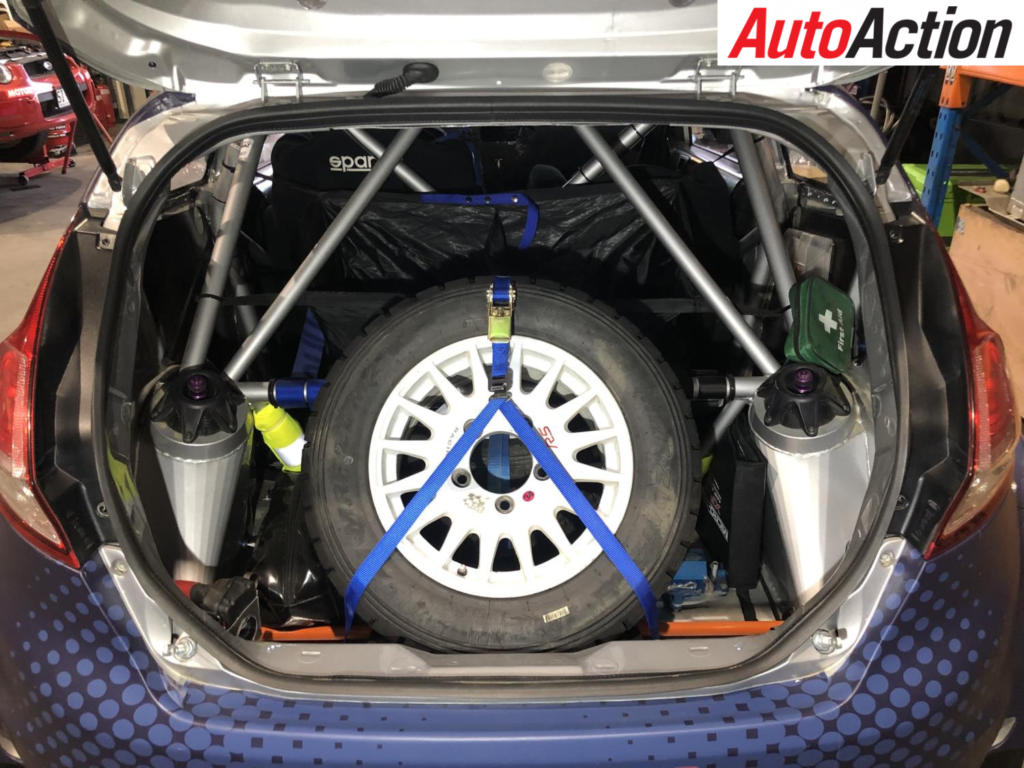
This is something the inexperienced Anear is continuing to grapple with.
“The weight distribution of the car, the way it rotates, it’s a problem I had when I first got in it because the Fiesta turns so well it was catching me out,” Anear explained.
“With my previous Subaru, I had to push really hard to get it to turn, whereas this thing you have to give it positive input in the form of the accelerator or brake. It transforms the weight from one side of the car to the other effortlessly and even in a mid-slide, when all the weight is one side of the car, you can transfer the weight back, it’s so responsive and compliant. The weight transfer of the vehicle is phenomenal and that effects a lot of the handling.
“Suspension travel is amazing. I can run over stuff that I would have previously had to drive around. That changes the line that you use and the speed that you carry through uneven surfaces.”

M-Sport also provides a set-up sheet, passing on its knowledge from the various conditions the Fiesta R5 has tested in, to advise its customers sway bar sizes and spring rates that suit the terrain. The Fiesta doesn’t run a front anti-roll bar and only runs a small rear, due to the ARC not running tarmac events.
The brakes are AP Racing, running 300x32mm internally ventilated discs specialised for gravel rallying and are interchangeable – along with the uprights – to each corner of the car. The calipers are four-piston AP Racing examples all round, while fitted inside are Endless brake pads.
Wrapping the AP Racing brake system are OZ Racing 15”x7” rims specifically designed for the Fiesta R5, while MRF are the control tyre of the ARC.
A motor sport body containing a bespoke M-Sport roll cage provides plenty of protection, as do the two chamber fire bombs within the interior and a further two-three under the bonnet in the unfortunate case of a fire.
The hatch, door skins and bonnet are stock items, with some modification, while carbon fibre bumpers, guards, wings and side skirts feature aero enhancements such as a rear diffuser, front air dam and wide wheel arches, giving the car an aggressive look. As standard procedure for rally cars, the guards have been cut away to allow more travel for the wheels.
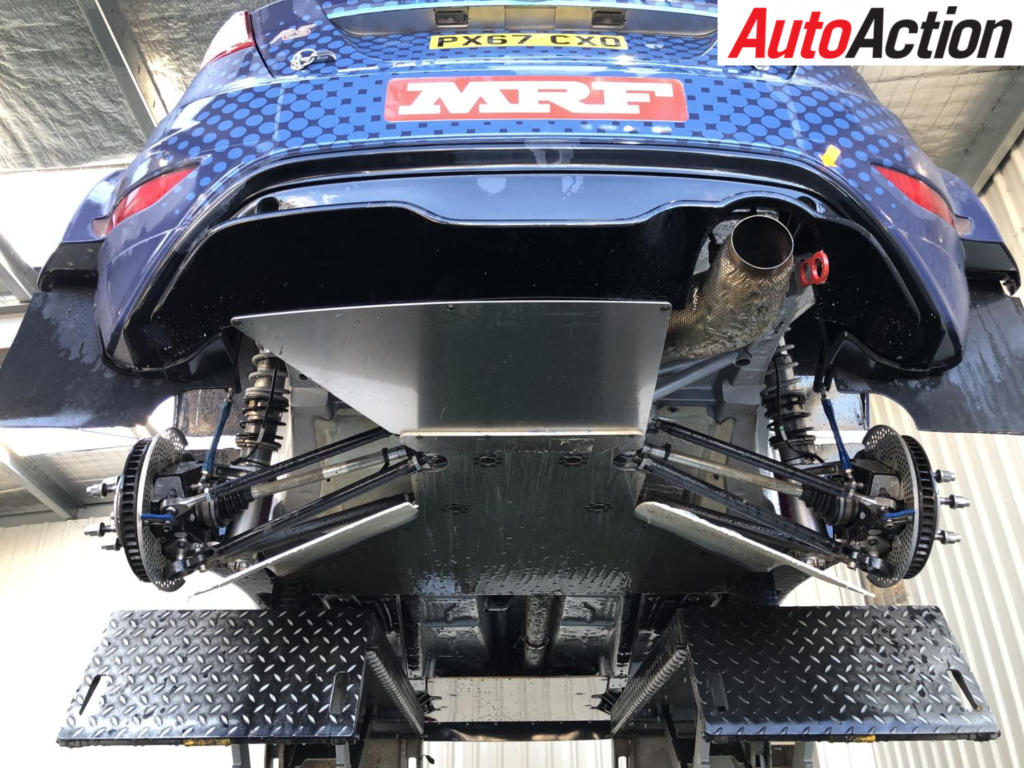
Underneath the car, there are two large sump guards, which Nunn estimates to be 8mm thick with the front weighing 30-40kg and the rear 20kg, which keeps the weight nice and low to the ground, good for centre of gravity.
Inside Sparco supplies the seat, harnesses and the steering wheel, which contains controls for the headlights, indicators, dash menu selector for the Life unit and launch control system. There is a switch unit in the centre of the interior containing other vital buttons such as activating the Fiesta’s heated windscreen.
“The ergonomics of the car are outstanding and really allow the driver to complete the job at hand,” praised Anear.
“The seating position in the Fiesta is very much in the centre of the car and for a small car, the corner of the windscreen is a long way away from the driving position and the steering wheel is far away from the firewall
“It’s left-hand-drive, so I have to work out how far the right-hand corner of the car is away and getting that depth perception is taking some time.”
Launch control is the only drive aid included in the Fiesta, as Nunn explained.
“You can change set up of launch. If there is more grip, for instance, you can increase the revs for the launch control, if you have less grip you can lower it down.”
“The Fiesta also features three different anti-lag modes.”

Anear and Glenney communicate via a Stilo Bluetooth Communication system, while in the back the Fiesta can carry two spare tyres, but under the R5 regulations must carry at least one. Fitting in alongside the spare is a hydraulic jack and an electric rattle gun.
R5 is certainly beginning to gain traction in Australia. The cars are becoming more accessible.
That’s not to say there isn’t room for AP4, G2 and PRC (Group N) cars in the series, but R5 appears to be the way of the future.
Cost is a major issue with R5, but Nunn believes these regulations are no more expensive then building and developing a good Group N chassis.
“There are people out there that say it is expensive, but I’ve been around rallying since the early 1990s and I know what it costs to build a good Group N car
“You had to spend a lot of money to build a good Group N car. An R5 is a little bit dearer, but not much.”
As rumours persist that further R5 cars are about to infiltrate Australia, is this the revitalisation that the ARC has long been looking for?
TECH SPECS: FORD FIESTA R5

ENGINE: M-Sport developed 1.6 Turbo, direct injection power plant, FIA regulated 32mm restrictor
POWER: 290 BHP @ 4000 RPM.
TORQUE: 475 Nm @ 4000 RPM.
TRANSMISSION: Sadev 5-speed sequential gearbox mated to Sadev front and rear differential units and a clutch disconnect fitted to the handbrake
SUSPENSION: Front and rear McPherson struts with re-designed 3-way adjustable Reiger dampers with aluminium bodies, geometry optimised for traction and stability, front and rear anti-roll bar options.
STEERING: Hydraulic servo-assisted rack and pinion steering
BRAKES: AP forged 4-piston front and rear calipers, gravel 300 x 32mm internally ventilated discs, Tarmac 355 x 32mm internally ventilated discs. Bespoke AP pedal box
WHEELS: Gravel 7 x 15” wheels, Tarmac 8 x 18” wheels with MRF tyres
BODYSHELL: M-Sport designed bespoke rollcage complying with 2019 regulations, widened bodywork and strengthened suspension turrets
ELECTRONICS: Life Racing F88 ECU with improved engine control code and single PDUX4 unit with smarter control strategies
FUEL SYSTEM: ATL 80-litre bespoke competition fuel tank
DIMENSIONS:
Length 4065mm
Width 1820mm
Weight 1230kg
Article originally published in Issue 1766 of Auto Action.
For Auto Action’s latest feature, pick up the latest issue of the magazine, on sale now. Also make sure you follow us on social media Facebook, Twitter, Instagram or our weekly email newsletter for all the latest updates between issues.


